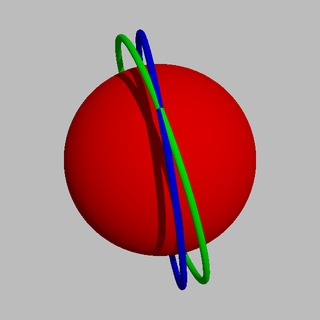
My latest posts can be found here: Previous blog posts:
Additionally, some earlier writings: |
The Sideways TideStand outside the International Space Station (wear a space suit, otherwise you won't have time to try this) and hold a juggling ball right by your helmet. Without imparting any relative (to you) velocity, let it go, and it will stay there. It's incredibly difficult to do this, apparently, because you always move slightly as you let it go and withdraw your hand, but in theory, it will just hang there, because you are in weightless conditions. Note that there is gravity - you are not in a gravity-free position. You are in "free-fall" (a technical term, meaning you are moving freely under the force of gravity alone), so you move together, you and the juggling ball.
But it doesn't ...But this isn't zero gravity. This is free-fall, and that's not what happens. If you get the direction exactly right (and the tolerances are inhumanly small) then the ball will go away from you, yes, in a straight line (more-or-less), yes, but it will slow down. After about 23.2 minutes it will come to a complete stop, and start to come back. Another 23.2 minutes sees it return to its original position, but now travelling in the opposite direction. It keeps going, but again will slow down, coming to rest after about 23.2 minutes, before starting on its return journey, arriving back in your hand after about 92.7 minutes. For most people, the correct reaction is - wait ... what ?? How does that happen?
When you have the ball "floating" by your helmet, you and the ball are both in circular orbit around the some point, the centre of gravity of the Earth. The two orbits are really close, so there's no real difference between them. You travel in close formation, and from your point of view, the ball "holds station" with you. But the clue is in the phrase "from your point of view". Looking in from the outside, you are both screaming along in a circle around the Earth at about 7.7 km/s. So what happens when you give the ball a push? We are assuming it's a gentle push (whatever that means), and in exactly the right direction (whatever that means).
But after 1/4 of an orbit you are travelling in parallel, and then the ball starts to come back to you. After 1/2 an orbit your paths cross, and the ball has returned. Then the dance repeats on the other side, until finally you are reunited after a single, complete orbit. From your point of view, if the direction you push is exactly right, the ball will bounce back and forth through your position, as if tethered by a piece of elastic. You can look at the displacement, and the ball is literally performing simple harmonic motion through your position. It appears to you that there is a "restoring force" for the ball, but that force is, in the grand scheme of things, fictitious. It's an artifact of your rotating frame of reference. How big is it?We can compute the size of this apparent force. The orbital period is 92 minutes, (more accurately, the orbital period of the ISS is about 92.68 mins) and for simplicity we will assume the maximum displacement is 1 metre. Then the formula for the displacement is:
Now acceleration is the double derivative of that, so
In the next post ...What happens if we throw the ball forward or backward? Will we again have a fictitious force? Will it be attracting? That's what we'll look at next time.
Send us a comment ...
|


 Suggest a change ( <--
What does this mean?) /
Send me email
Suggest a change ( <--
What does this mean?) /
Send me email